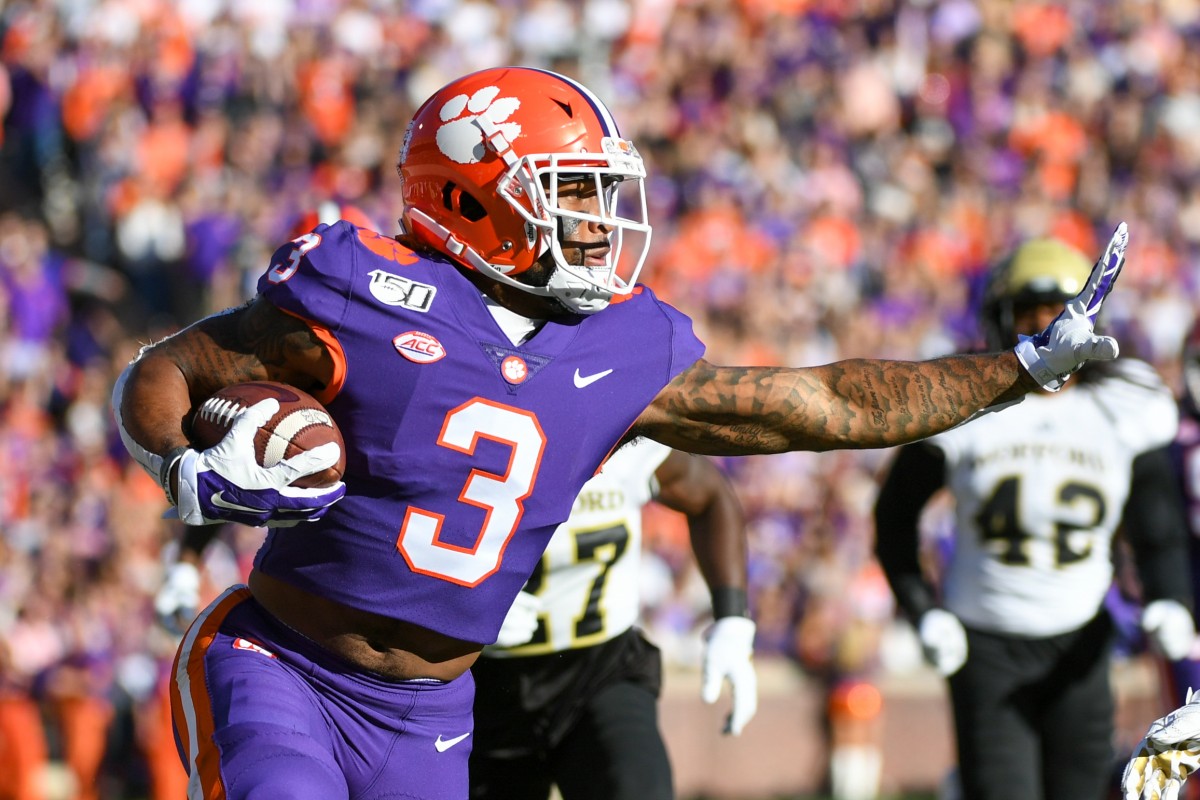[mm-video type=video id=01f4jx6sdjq6cx5m98ex playlist_id=01eqbxb1xg7g19wqdc player_id=none image=https://images2.minutemediacdn.com/image/upload/video/thumbnail/mmplus/01f4jx6sdjq6cx5m98ex/01f4jx6sdjq6cx5m98ex-9b38ee9c6e23acd56c162eef02b24097.jpg]
The Green Bay Packers had a decision to make at No. 62 overall: take the potential plug-and-play center from Ohio State, or the versatile slot weapon from Clemson.
The Packers decided on Josh Myers, with his size and multiple-position ability for the offensive line serving as the tiebreaker. But even after making the pick, general manager Brian Gutekunst wasn’t ready to give up on getting Amari Rodgers. He immediately ordered his staff to start making calls and finding ways to move up the board and get the Clemson playmaker.
The process took a while, but it finally clicked. The Packers moved up seven spots in the third round, at the steep cost of a fourth-round pick, and snagged Rodgers at No. 85 overall.
To say the Packers were happy to get him would probably be an understatement. The team thinks Rodgers can be an impact player for the Packers – on offense and special teams – right away.
“His pedigree, his performance in college at a big-time stage were things that comforted us and feeling like he could step in and be a productive player for us early in his career,” Gutekunst said.
Gutekunst and his staff were enamored with Rodgers’ fit in the Matt LaFleur offense. He said the Packers have been looking for this type of player – a dynamic playmaker in the slot – for at least the last two years.
“He fills so many holes for us,” Gutekunst said. “That’s one of the reasons we traded up for him. Not only as a punt returner and slot receiver, but as you guys have seen over the past few years, the creativity that Matt has within his offense, some of the jet sweeps and screens. He’s a 212-pound receiver, he’s not one of these smaller guys. So I think kick returning could be part of his arsenal as well. He’s just built for us up here in Green Bay. Very versatile plyer. Very smart player.”
In many ways, Rodgers is a Randall Cobb-type player, although Gutekunst wouldn’t go into comparing the two.
Gutekunst said Rodgers has “been a pro from an early age” and is a “polished route-runner.” The Packers also like that he’s been through a major injury (ACL in 2019) and came back stronger, noting the value in having players that have gone through adversity before entering the NFL.
Rodgers stands 5-9, far shorter than most of the receivers the Packers have drafted in the recent past, but Gutekunst has no worries about his size, and he’s especially excited about the way Rodgers uses his power and elusiveness to create the ball in his hands.
“This guy is short but he’s not small. He’s 212 pounds,” Gutekunst said. “When you see him, he’s not a small man, he’s just not tall. I do think he’s a little different than some of the other slot guys around the league. He’s built more like a running back. He gave me great comfort because you can’t run by everybody in this league. You have to take on contact and break tackles and he can certainly do that.”
Rodgers caught an ACC-high 77 passes in 2020. He first broke out as an impact player at the young age of 19 at Clemson, helping the Tigers as a slot receiver and punt returner. Still only 21, Rodgers has 55 games of collegiate experience under his belt entering the NFL.
Gutekunst had to give up one of his fourth-round picks to move up seven spots in the third round and get him. The Packers still have a fourth-rounder to use on Saturday, but Gutekunst paid a pretty penny to move up and get Rodgers.
“I thought it was important because of the value of the player I wanted,” Gutekunst said.
[lawrence-related id=57985,57974,57970,57952]
[listicle id=57883]
